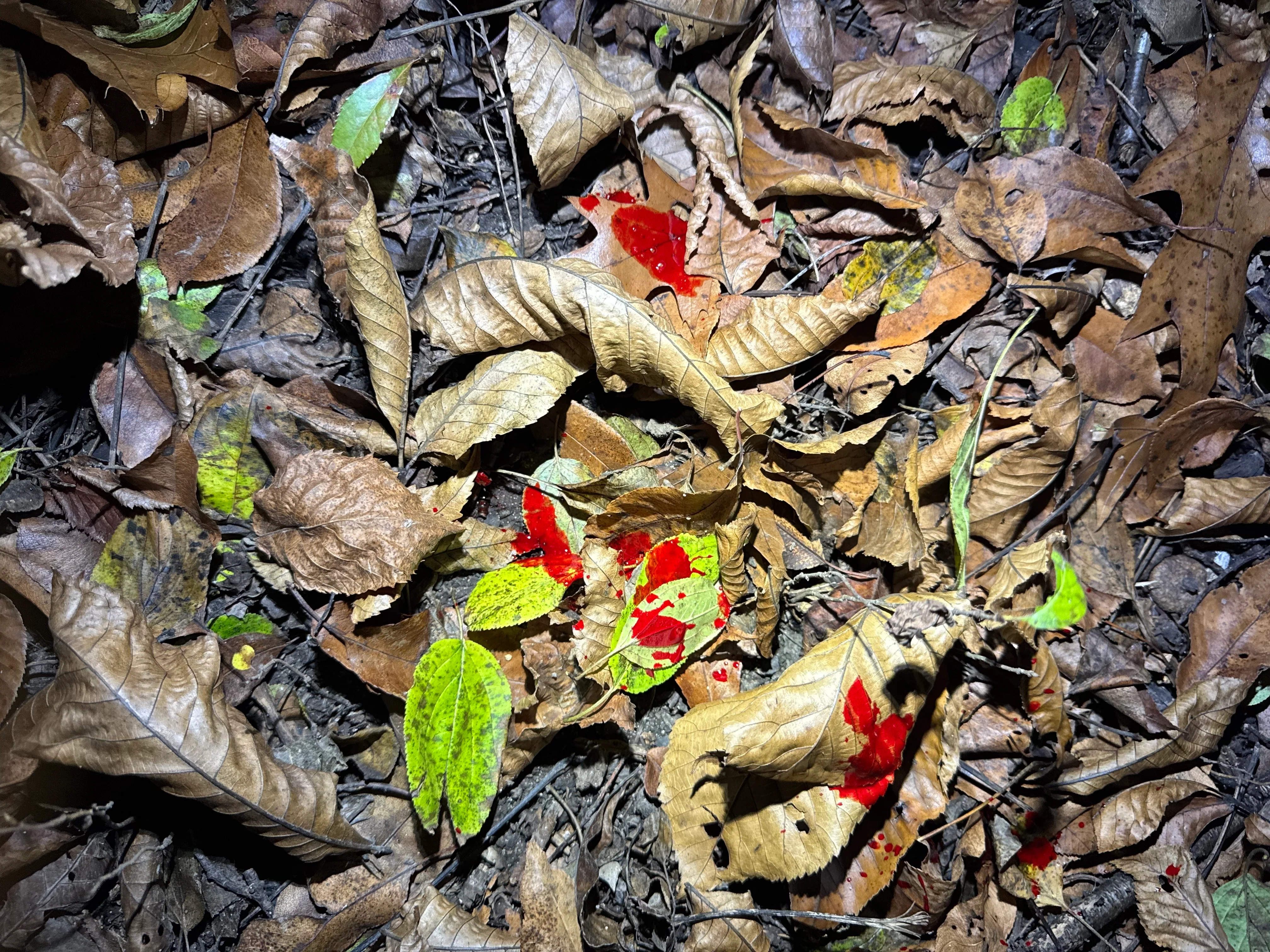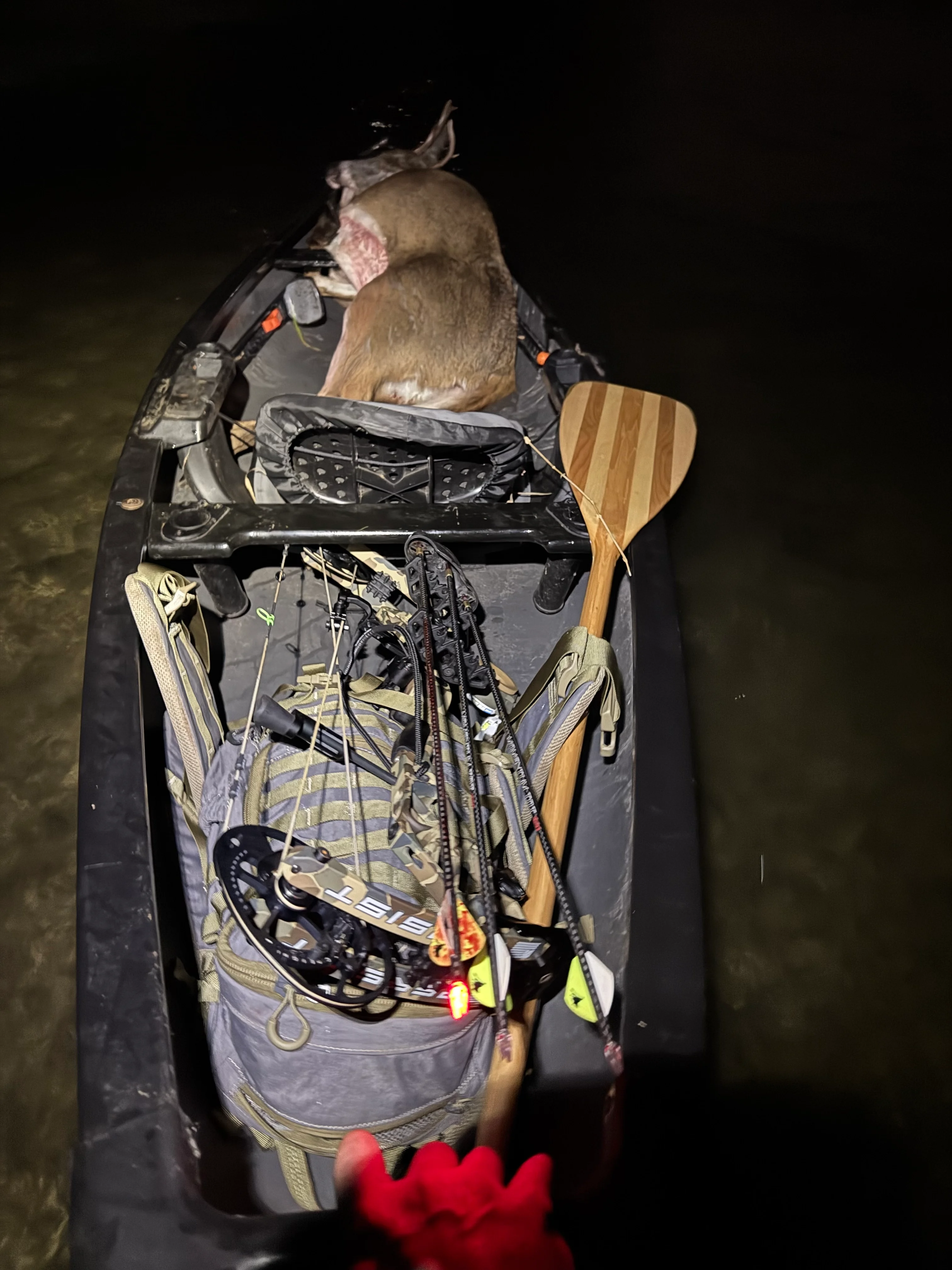This story is a collaboration with the Okayest Hunter.
They say we’re always supposed to be moving forward—grow, improve, evolve. When you tag a 6-point whitetail deer, next year it ought to be an 8, then a 10. If you shot a 120-inch buck, the next one better break 140. That’s the unwritten rule in the hunting world, the one nobody says out loud but everybody feels. Sometimes, though, the only way forward is to take a step back—a stumble. Sometimes the lesson doesn’t show up as a trophy, but as a scar—or a tiny set of antlers barely poking through the hair on a young buck’s head.
Lost and Unfound
On November 6, 2024, I shot a buck and didn’t recover him. For some peace of mind, I hired a thermal-drone recovery crew. Not long after takeoff, they spotted a carcass. My heart sank, but when we got there, I realized the deer wasn’t mine. A local Facebook group later confirmed it belonged to another hunter. My deer, it seemed, wasn’t hit lethally and would live.
You’d think that would feel like relief. It didn’t. It was worse. Like a bad dream you can’t wake up from. I spent the next few days away from the woods, licking my wounds and trying to soak up quality time with my family. It still stings to say it out loud: I shot a deer and didn’t recover it. It’s the kind of failure that festers in a hunter’s mind like an itch you can’t quite reach. You replay every second of the shot—slow-motion, from draw to impact. You doubt your bow, your broadhead, your decisions, and worst of all, yourself.
I told myself I’d hang it up for the season, because that’d be the responsible thing to do. The truth was more straightforward: I didn’t want to fail again. My ego was bruised, and I wanted to escape that feeling. Going back to the woods might bring it all back.
But ego doesn’t die quietly. It thrashes and claws. And sometimes it drags you right back into the woods, whether you’re ready or not. Luckily, the deer woods is a place for deep healing, too. Ten days later, I was back.
Back in the Woods
On November 16, I was paddling my canoe through a stretch of southeastern Wisconsin public land that doesn’t give up deer easily. My lungs burned from a cold I couldn’t shake. By the time I reached my spot, I realized I’d forgotten my saddle platform; one of those details that separates normal hunters from an Okayest Hunter. I laughed at myself. If the day was already upside down, I figured I might as well lean into it. So I hunted from the ground.
As the sun bled out over the canary grass, I heard rustling in the marsh. Out stepped a spike buck, moving right down the trail I was sitting on, closing the distance until he was maybe 5 yards away at the last possible minute of legal shooting light. He wasn’t a wall-hanger. Not even close. Just a living, breathing deer.

My heart hammered. My palms slicked around the bow grip. This wasn’t about redemption through inches of antler; it was about proving I could still get it done. Proving my gear worked. Proving to myself I could fill the freezer.
The arrow found its mark. A clean pass-through. The lighted nock was shining bright through thick grass, and I followed the blood trail easily at first. Then it thinned—and my mind started to unravel. The thought of losing another deer crept in like a cold draft. But I kept searching, scanning for every tiny fleck of red. I slowed down to a crawl, moving through the dark hardwoods as slowly as a sloth.
Then I caught the faint reflection of eyes at ground level. Fifteen yards beyond where the trail had gone cold, there he was. My deer.
The relief hit like a wave. Gratitude. After all the noise in my head that season, the silence that followed finding that deer in the silent darkness of the hardwoods was the best sound in the world.

A Valuable Lesson
Dragging the through the hardwoods and then the thick canary grass, I started laughing again, because I don’t think my infected lungs or small canoe could have handled a deer any larger than the one I tagged. Every paddle stroke upriver felt like losing two. Somewhere in that exhaustion, I found peace. Probably because, for the first time all season, I wasn’t chasing something. I was just doing the work.
I’d set a goal earlier in the year: Take a deer on public land, from the water, and paddle it out. I finally did it.

When I got home and pulled the little buck into the garage, my 7-year-old daughter came out in her pajamas, excited to see what I’d brought home. She squinted at the deer and asked, “Is it a buck or a doe?”
The rack was small enough that I couldn’t blame her for asking. I told her it was a little buck. She nodded, thoughtful as ever, and said, “Well, we’re still going to eat it, right?”
That line hit harder than the endless paddle strokes headed upstream, the fever, or the lost buck from 10 days earlier. Her voice was the one I didn’t know I needed to quiet my own. The one that reminded me why I hunt in the first place.
That small deer filled our freezer. It filled our dinner plates. It filled a gap in my confidence that larger antlers never could. That season, I didn’t get many sits. Three, maybe four. I missed chunks of November traveling with my family. I never had a doe within range. But that little spike was enough.

